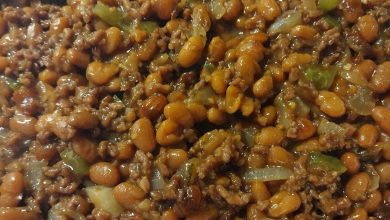Can someone explain what a bay leaf actually does? I always see it in recipes but can’t taste the difference it makes

Have you ever wondered about the mysterious bay leaf? It’s a common ingredient in many recipes, yet its subtle influence often goes unnoticed. This unassuming leaf, with its aromatic complexity, has a fascinating history and a surprising impact on our culinary experiences.
ADVERTISEMENT
A Historical Journey
ADVERTISEMENT
The bay leaf, derived from the noble laurel tree (Laurus nobilis), has been a culinary companion for millennia. Ancient Greeks and Romans revered the laurel, using it not only in cooking but also as a symbol of victory and honor. Its aromatic leaves have traveled through time and across cultures, becoming a staple in European, Mediterranean, and Asian cuisines.
ADVERTISEMENT
Unveiling the Aromatic Secrets
Bay leaves possess a captivating aroma, characterized by subtle notes of pine, menthol, and pepper. These aromatic compounds, including eucalyptol, eugenol, and myrcene, are released when the leaves are simmered in liquids. This process infuses dishes with a rounded, more cohesive flavor profile, enhancing the overall taste without overpowering other ingredients.
The Art of Flavor Enhancement
Bay leaves are true flavor magicians. They work synergistically with other ingredients, subtly boosting their savory characteristics. This results in a fuller, more umami-rich experience, especially in slow-cooked dishes where the leaves have ample time to impart their aromatic essence.
Culinary Applications Around the Globe
Bay leaves are incredibly versatile and find their way into a wide range of cuisines. They are a cornerstone of French cuisine, often included in bouquet garni, and are indispensable in Indian biryanis and curries. In the Americas, they add depth to gumbo, chili, and various broth-based dishes.
Nutritional Value and Substitutes
While bay leaves are not typically consumed whole, they do contain vitamins A, C, and folic acid. However, the amount transferred to a dish from a dried leaf is minimal. While there’s no perfect substitute for bay leaves, some cooks use thyme or oregano for a similar aromatic touch. However, these herbs have their own distinct flavors, so the overall taste of the dish may be altered.
The Mystery of Taste Perception
The subtlety of bay leaves can make them challenging to detect for some. Individuals with less sensitive palates might not perceive their nuanced influence, while others who are more attuned to flavor layers may appreciate their role in elevating a dish’s complexity.
Debunking the Myth: Are Bay Leaves Worth It?
Contrary to popular belief, bay leaves are not a culinary placebo. Their ability to enhance flavor, especially in slow-cooked dishes, makes them a valuable addition to any pantry. While their cost is minimal, their impact on the overall taste profile is significant.
Preserving Flavor and Experimentation
To maximize the aromatic potential of bay leaves, store them in an airtight container, away from light and heat. Fresh bay leaves offer a more potent aroma, but dried leaves can last for years when stored properly.
To truly appreciate the role of bay leaves, try a simple experiment. Prepare a tomato sauce or broth with and without bay leaves to notice the subtle difference in flavor complexity. This firsthand experience can shed light on the often-overlooked contribution of this enigmatic leaf.
Conclusion: A Culinary Treasure
Bay leaves may not be the star of the show, but they are the unsung heroes of many culinary masterpieces. Their ability to enhance and harmonize flavors makes them an invaluable ingredient. So, the next time you encounter a bay leaf in a recipe, don’t dismiss it as a mere garnish. Embrace its subtle magic and discover the depth it can add to your culinary creations.




